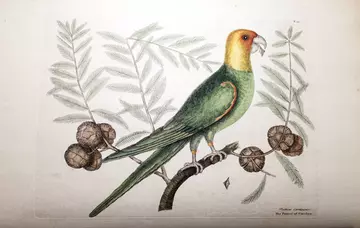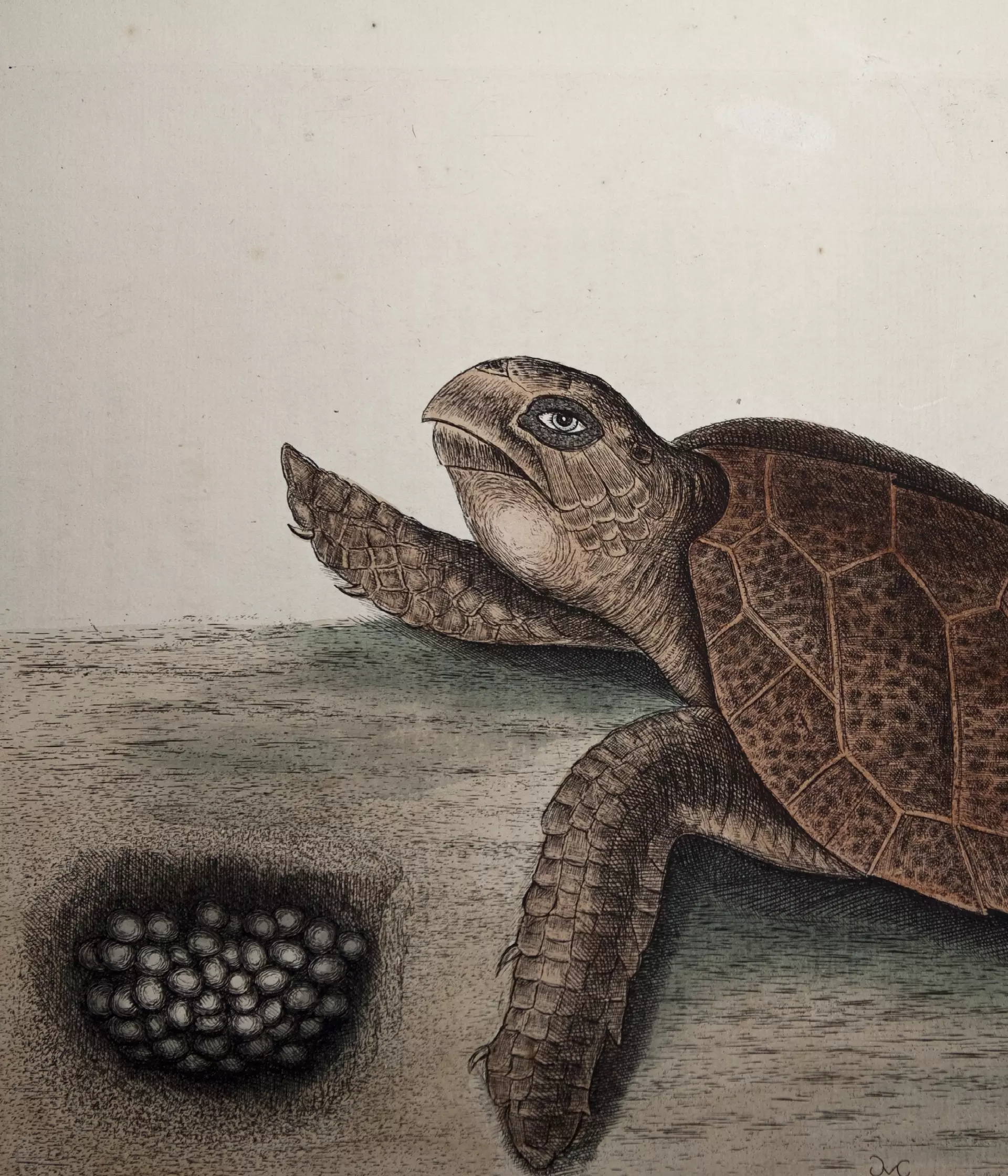
Emma Milnes
Deputy Librarian
Mark Catesby (1683-1749) was one of the most influential naturalists of the early 18th century.
Mark Catesby's famous two volume work ‘The natural history of Carolina, Florida and the Bahama Islands’ (published between 1731-1743) remained an authority on American natural history for over 100 years!
At the time of their publication the volumes were hailed for their success in enlightening Europeans to the new species that could be found in the Americas, but today modern readers marvel at not only the beauty of the books but also the number of species that are either extinct or critically endangered.
ZSL Library is fortunate enough to have both these incredible volumes in its collection, and we would like to share with you some of the wonderful engravings contained inside them.

Mark Catesby's artistic style
Something that may strike you is the way in which the animals (most famously the birds) interact with the environments they are depicted in. Catesby manages not only to capture the birds’ likeness in remarkable detail, but he also makes a point of illustrating birds with the accompanying plants they either fed upon or nested in. This level of extra information is important as we can consider these volumes to be particularly early examples of an ecological study.
During the 1700s and beyond, Catesby’s work was valued for highlighting species that Europeans had never encountered before, but today the work has taken on a more poignant meaning as many of the species Catesby depicted are now either extinct or critically endangered.
Extinct or critically endangered species
According to the IUCN red list the last confirmed sighting of the ivory-billed woodpecker (featured above) was in 1944, and it is thought that if any survive the population must be tiny. Also, sadly, the hawksbill turtle (first image featured) is also now critically endangered too.
Let us now look at two of the bird species found in Catesby which are now confirmed extinct.
Firstly, the Carolina parakeet. This beautiful bird would have been common during Catesby’s travels, but by the 1800s had already started to decline in numbers. The last confirmed wild sighting was in 1910, but the last known Carolina parakeet died in captivity in 1918.

Our final image is also a tale of tragedy, and it is of the now extinct passenger pigeon. At the start of the nineteenth century it is thought to have been one of the most abundant birds on the planet, and Catesby’s eyewitness account from the 1720s seems to confirm this when he states: “In Virginia I have seen fly in such continued trains three days successively, that there was not the least interval in losing sight of them...” . These words hit home when we consider that Martha, the last passenger pigeon, died in Cincinnati Zoo on 1 September 1914.

References:
The natural history of Carolina, Florida and the Bahama Islands … / by Mark Catesby. - London : printed at the expense of the author, 1731-43
The great naturalists / edited by Robert Huxley. - London : Thames & Hudson in association with the Natural History Museum, 2007
IUCN Red List https://www.iucnredlist.org/
